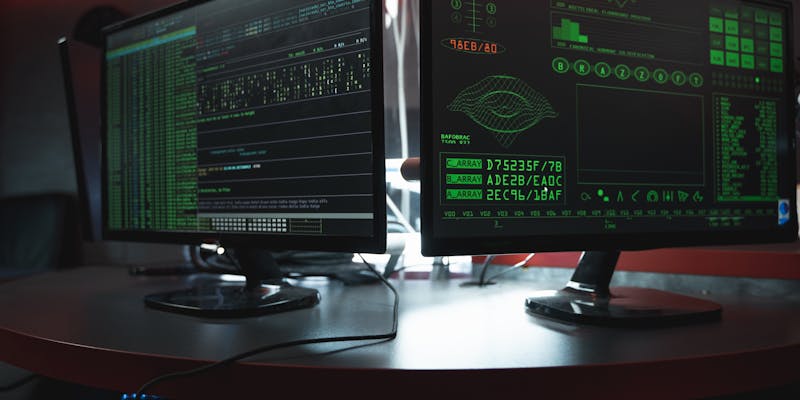In the evolving world of cyber threats, the speed with which hackers exploit new vulnerabilities is alarming. This fact was starkly illustrated by the recent events surrounding ConnectWise ScreenConnect, a widely-used remote access tool. After the exposure of certain vulnerabilities, hackers did not waste time developing a proof-of-concept exploit, which presented a substantial threat to a vast array of organizations using the software.
This incident underscores the dangers that newly discovered software vulnerabilities can pose, especially when they are quickly turned into functional tools in the arsenal of cybercriminals. In the particular case of ConnectWise ScreenConnect, the exploitation could potentially allow ransomware groups to infiltrate systems, leading to data breaches or other malicious activities.
The ConnectWise ScreenConnect vulnerabilities serve as a critical reminder of the urgency required in responding to such threats. Organizations must stay vigilant, updating and patching their systems immediately after vulnerabilities are made known. The rapid response is crucial in staving off the efforts of cybercriminals who are ever-ready to capitalize on any security oversight. Ultimately, these events highlight the ongoing cybersecurity battle and the need for robust and swift defensive strategies to protect digital assets.
Discovery and Severity of ConnectWise Vulnerabilities
The discovery of two vulnerabilities in ConnectWise ScreenConnect sent ripples through the cybersecurity community. CVE-2024-1709, an authentication bypass flaw, and CVE-2024-1708, a path traversal vulnerability, were severe enough to compel immediate action with scores of 10 and 8.4, respectively. ConnectWise moved quickly to release patches, yet their commendable response came up against an onslaught of malicious actors who sensed an opportunity in the chaos. Warnings to expedite software updates reverberated across the user base of ScreenConnect, with clear implications: without fast action, cybercriminals stood ready to infiltrate systems, usurping administrative control and wreaking havoc in their wake.
Rising Exploitation Post Patch Release
The proverbial floodgates opened when a proof-of-concept exploit code became public knowledge. Cybercriminal groups, notably Black Basta and Bl00dy, wasted no time harnessing the ConnectWise vulnerabilities to fulfill their nefarious goals. The uptick in exploitation attempts was not merely quantitative; it showcased a commitment to advanced methodologies and tailored attacks. The Black Basta group engaged in a multipronged approach: conducting invasive reconnaissance, usurping user privileges, and deploying Cobalt Strike – all classic preludes to comprehensive ransomware invasion. Their insidious activities included an unsettling ability to manipulate user accounts and gather precious data, signifying a high level of preparedness and intent.
Parallel to this, the Bl00dy ransomware group maneuvered the same vulnerabilities to propagate its own brand of ransomware. They amalgamated builders from recognized ransomware families such as Conti and LockBit, all the while imprinting their unique identifier in a shrewd blend of established efficacy and individual branding. This adaptability and astute operational execution were a clear declaration of an evolving, mature threat environment capable of swift tactical shifts.
Sophistication of Attack Strategies
Delving deeper into the aftermath of these vulnerabilities reveals a methodical degradation of security safeguards and an influx of multifaceted cyberattack strategies. Security measures on compromised servers, notably Windows Defender’s real-time protection, were disarmed, signifying the beginning of more extensive and damaging operations. Following this preliminary step, cyber attackers implemented a host of intrusive tools, including the formidable XWorm malware. Its capabilities extend beyond unauthorized access and transport within a network; XWorm facilitates data exfiltration and the insertion of additional payloads, exemplifying the strategic depth of post-exploitation maneuvers.
Immediate Response and Mitigation Efforts
With the ConnectWise ScreenConnect users in the crosshairs of an emergent cyber threat, the call to action was urgent and decisive: update to version 23.9.8 to shield against the exploitation of these dangerous vulnerabilities. This critical update offered a lifeline to organizations hoping to curb the onslaught and prevent cybercriminals from claiming a foothold within their digital infrastructures. The response from the cybersecurity industry was unambiguous, advocating for immediate and vigilant application of updates as a defensive bulwark against external threats.
Adapting to the Evolving Cybersecurity Landscape
In the wake of these attacks, one truth struck with clarity: the cybercriminal world moves with startling quickness to leverage newly exposed vulnerabilities. This cardinal realization places upon businesses and cybersecurity teams the imperative to be equally nimble in their defensive approaches. Embracing agility in their strategic response to vulnerability disclosures is no longer optional; it has become a fundamental requirement to successfully parry the relentless onslaught of threats.
The diverse tactics employed by threat actors in the exploitation of ConnectWise ScreenConnect highlight the intricate and layered nature of the cybersecurity challenges we face today. It’s a stark reminder that organizations must remain ever-vigilant and forward-leaning, preparing for a gamut of security threats with versatile responses. The continuous evolution of attack vectors demands a corresponding evolution in defense postures, where understanding and readiness must align to form a resilient shield in an unpredictable digital realm.

